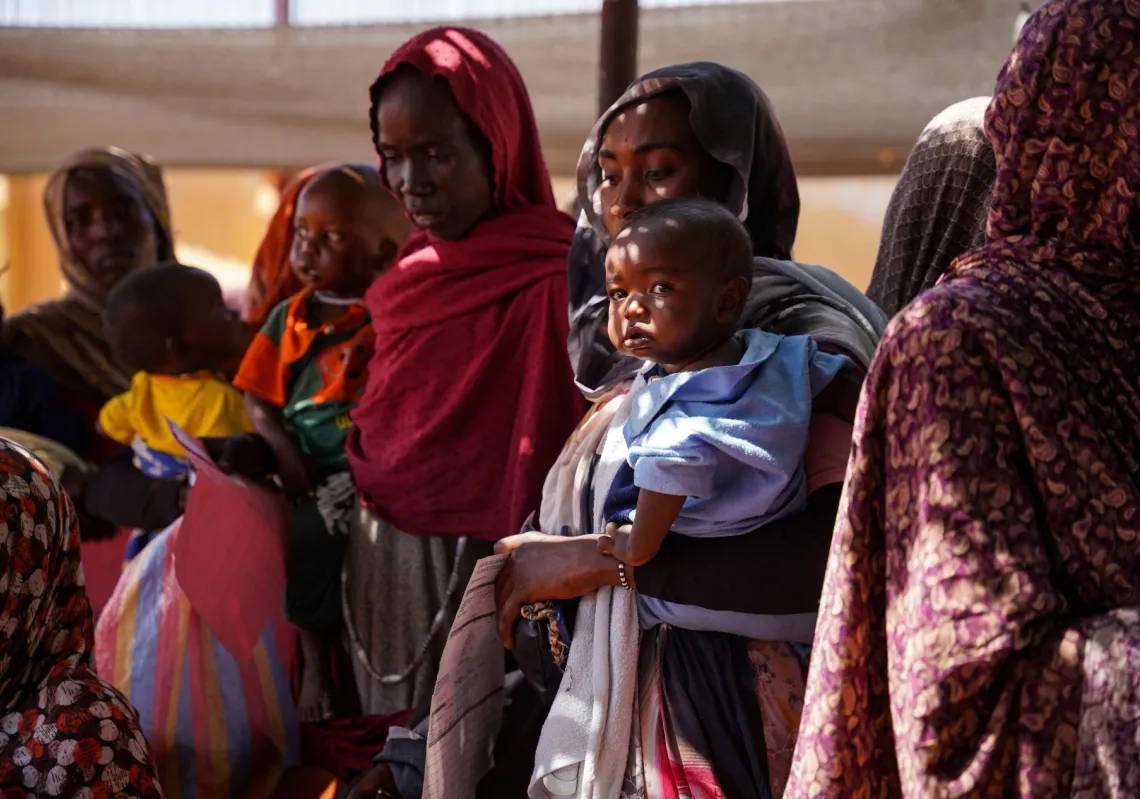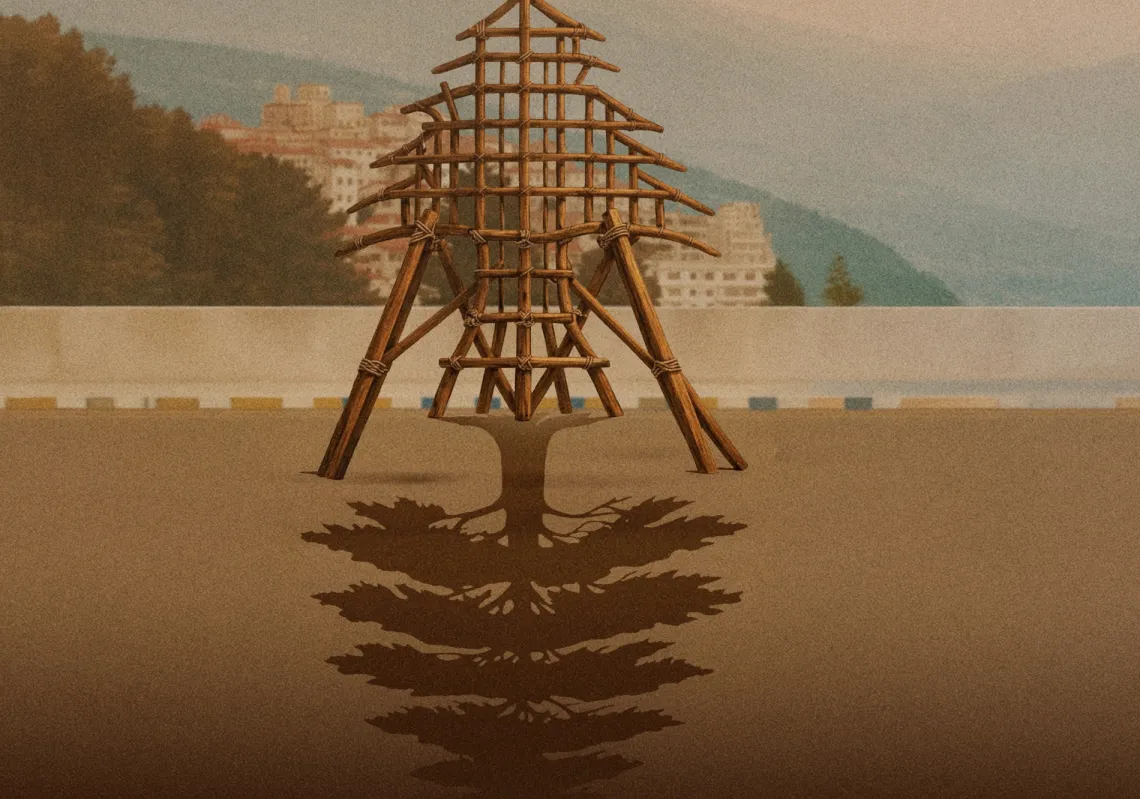The world may be changing rapidly, mostly for the worse, yet in London’s Somerset House, built with all the stolid permanence of the Neoclassical style, you would hardly know it. On a sunny morning, as you look up from the immense courtyard, its angular stone buildings seem to lay claim to a vast section of the sky. None of the city’s overweening towers are visible from here. It’s possible to forget you’re in the modern megalopolis.
But the world is changing and at an alarming pace. The images in this year’s Sony World Photography Awards exhibited amid the Georgian splendour belie the air of reliable permanence. They show us the changes brought about by pollution, ecological devastation, climate change, and the strange ways human beings try to live through the unfolding apocalypse.
It seems a bit hard on the other photographers in this exhibition to have to bear comparison with an undoubted genius of their craft. Sebastião Salgado, celebrated here for his life’s contribution, is an impossible act to follow. In some cases, the younger photographers—and they are all younger since Salgado is eighty now—are almost certainly aware of his commanding presence and have set out to emulate him.

Some of the most striking images, however, are closer to Salgado’s native country. In the Bolivian Andes, the Uru community that lived on a large saline lake in floating houses, depending on it for their livelihoods, have had to cope with the lake’s disappearance in 2016. Now they are reduced to ‘floating’ on the dry bed where the water used to be.

Similar melancholy appears in the rituals of the Captive Lord of Ayabaca, shot in Peru. Pilgrims carry effigies of their saviour at the moment he was taken to be crucified. They walk for four months across the highlands, some 2,000 kilometres, to atone for their sins.
Such rituals are steeped in the tragedy of South America, a place where the apocalypse began with the arrival of the conquistadors and continues to this day with the dwindling number of indigenous tribes. It is a part of the world ravaged by illegal mining, deforestation and organised crime. And it was the original inspiration for Sebastião Salgado. In a recent interview, the great Brazilian photographer described how he came from an underdeveloped country with huge social problems:
"...for a while, I studied and worked as an economist. I was a Marxist, then became a Maoist and afterwards a hippy. These movements gave me a communitarian vision of the planet, which inevitably led me to a human, social kind of photography."
This description of his work is deceptive, however. He gives us people, but they are typically like ants in a vast landscape. As a result, intimacy is rare. True, the occasional image narrows the field down to a more human scale. In a cheerful shot of indigenous people in Guatemala, for instance. Maybe this is a nod to the legacy of Henri Cartier-Bresson.

In another shot of Sicilian tuna fishermen, the men have a timeless quality, with the oldest among them gazing into the distance like the questing Odysseus.

But this is not really the kind of work that one associates with Salgado. The wry, subtle play with visual echoes and the vitality of the individuals are a diversion from the huge movements that fascinate him. It is these – like the victims of a genocide – which make his pictures sublime, though without necessarily fitting Edmund Burke's famous definition. There is far more terror than delight in these panoramas and always a solemn beauty.

A photograph can elicit a whole range of feelings in us. The feeling these austere, monumental images from his Exodus project inspire, more than any I know, is the unending anxiety of a species lonely as a dispossessed child. Salgado shows us the entire species as that child, compelled to go it alone in the universe. The loneliness is cosmic. At times, he hovers way above, like a harmless drone, as events unfold below; at others, he walks right up to the refugees where they’ve pitched their tents, as here in Tanzania.

The Exodus project began in 1993 and lasted for six years. During that time, Salgado documented Latin Americans fleeing to the US, Jews from the former Soviet Union, the Hutu refugees of the Rwandan genocide, the Kosovars exiled into Albania, and the Arabs and sub-Saharan Africans crossing the Mediterranean Sea to reach Europe. Between 2004 and 2011, he moved on to a series of photographs under the title Genesis. Here, he sought out the world before destructive forces have taken hold, with its animals and people living as close to a natural state as possible.
I first became aware of Salgado through his early pictures of workers in a Brazilian goldmine, Serra Palada. These stunning shots first emerged back in the days of luxuriously produced colour supplements to the Sunday papers, which now seem like baroque flowering of a lost age. Expensive and plush, they were the last hurrah of the legacy media.
In one such magazine, I first set eyes on Salgado's epic grandeur. In grainy black and white, he had borne witness to the teeming mass of Brazilian gold-diggers as they created a massive gash in the landscape, descending precarious ladders, then ascending again with back-breaking loads.
Franz Kafka wrote an enigmatic aphorism that prophesied what he called an inverted Tower of Babel. Here is that tower. Though the toil of these men is destructive, the result has all the visual grandeur of Breughel's Babel, a vast enterprise that offends the eye of God, and with his drone eye Salgado had captured this profane immensity. They were photographs quite unlike anything I’d ever seen, as weird as the first shots of the terracotta army of China’s first emperor, or of the surface of Pluto.

Whether it's the monochrome of so many of these shots or the sheer scale of the scenes, Salgado's pictures have a distinctive pathos that verges on the tragic. In the case of his project on refugees, the tragedy is obvious. It's there, though, even in the slow shutter blur of an Indian railway terminal, the commuters’ individual identities swallowed up in a surge of dirty light.
Over and over again, we are confronted with the sheer biomass of our species. This can induce what psychologists refer to as agoraphobia. More precisely, these are arrested images of enochlophobia, the fear of crowds.
This may not be an anxiety the photographer shares—the observing eye is forensically detached—but Salgado's human race seems to obey the Biblical command to multiply, and when he stands back, it's as if the clinical distance threatens to dehumanise them, turning their vast numbers into the ‘swarms’ and ‘swamping’ of a right-wing demagogue's inflammatory rhetoric. They are lost in herds, hordes, and even tides. They become no more than the components of collective movement. Only the crowd itself has agency.
Perhaps this explains the pathos. There’s the feeling that people in these numbers can only fulfil the tyrant's dictum (coined by Stalin) that the death of one man is a tragedy, but that of a million is a statistic.
The black and white of these images gives the men and their clothing the quality of corpses exhumed from a peat bog. Yet there is an exception to this cadaverous frenzy: a man appearing to take a rest among his fellow workers.
Or another figure, this time bent under a load destined for the spoil heap, which he has looped around his forehead. Below, dizzyingly far off, are the ladders on the opposite side of the chasm he is helping to carve out.

All of this artistic detachment had a price. Eventually, the life of a human ‘drone’ took its toll on Salgado. In the interview with National Geographic, he explains:
‘As a photographer, I witnessed exceptionally terrible things. After documenting the 1994 Rwandan genocide and its aftermath, my body finally started giving signs things weren’t good for me. I became sick and grew hugely depressed. A doctor recommended I rest for a few months, so Lélia (his wife) and I moved back to Brazil, to the southern state of Bahia, part of the country’s Atlantic Forest region. We lived by the beach, close to ancient tribes. I became quieter; I felt better.’
This was the point where his second remarkable career began as a conservationist. Salgado has proved—on the exhausted, parched land bequeathed to him by his parents—that the rainforest can be restored. There is even an account of his success in the words of Sir David Attenborough, the preeminent naturalist of our age—part of The Green Planet, Series One, Episode 5: Human Worlds. Without actually naming the famous photographer, Attenborough describes his Earth Institute (Instituto Terra) and how the assiduous planting of some three million native trees to replace the existing cattle grass led, in just ten years, to a repopulating of the area with rare animals:
“The institute never introduced anything but trees - the animals came back on their own. Small ones and then, very recently... a maned wolf, drawn to the wolf fruit tree. Not only that, a puma... with cubs!”
The childlike enthusiasm of Attenborough’s voice as he says ‘with cubs’ and we see the cubs wandering along the bank of one of the revived streams perfectly reproduces the sense of coming full circle in Salgado’s project. He prophesied the apocalypse. Then, against all expectations—including his own —the prophet lived to witness its reversal.











